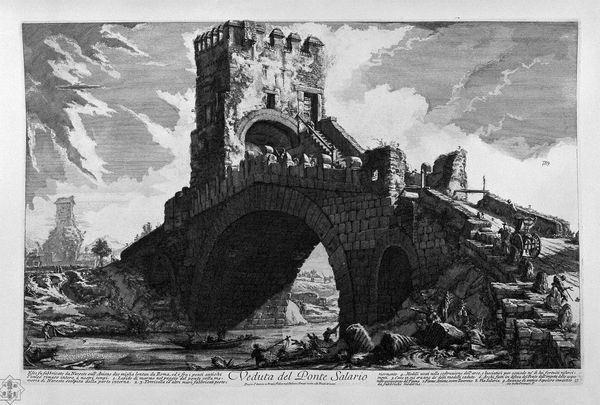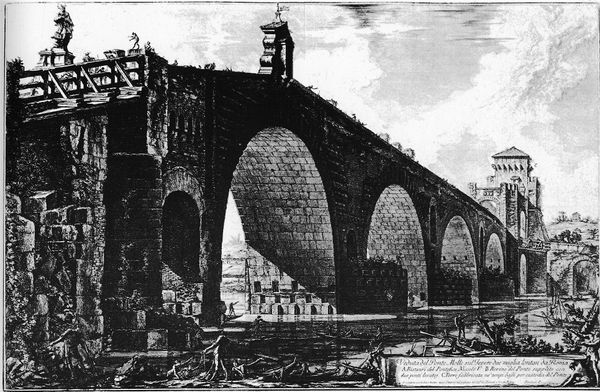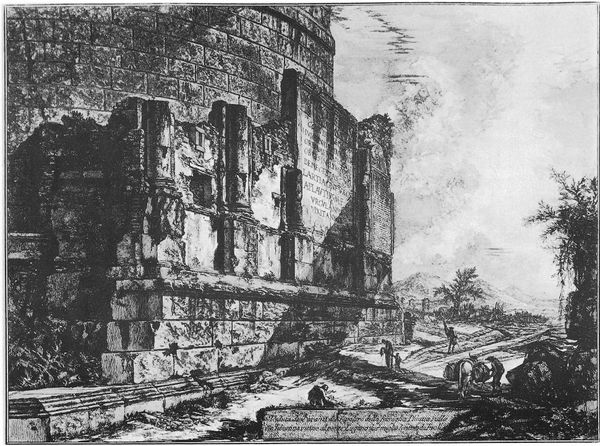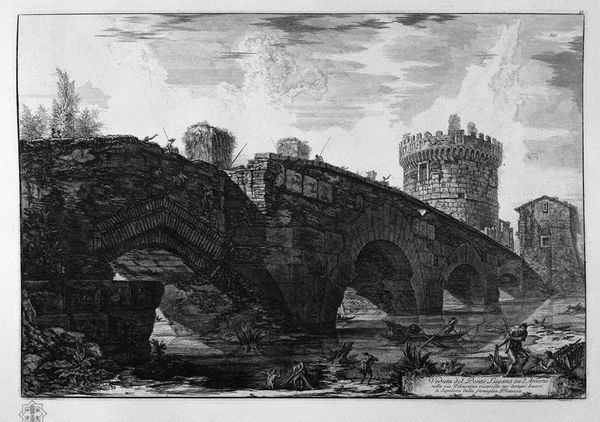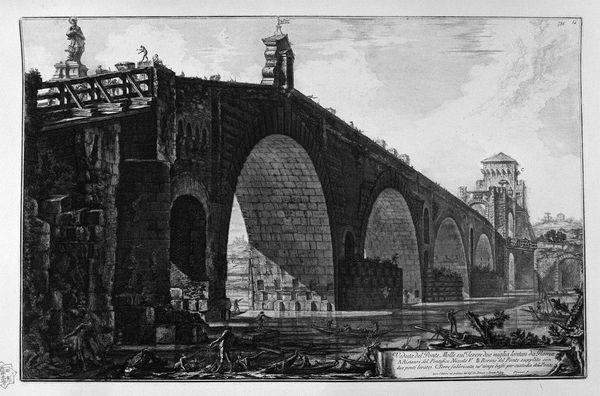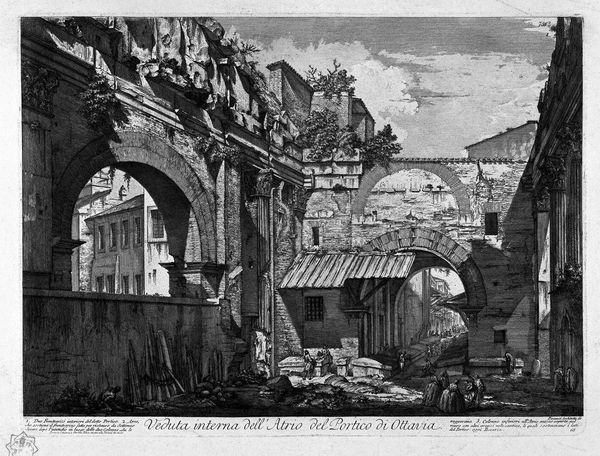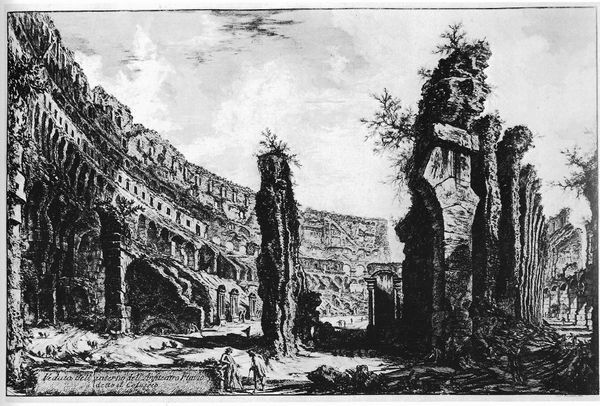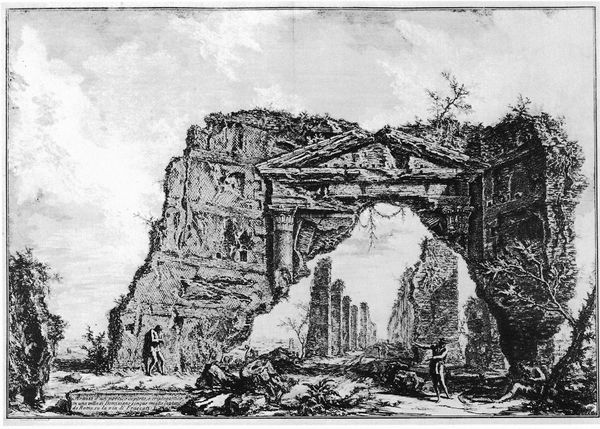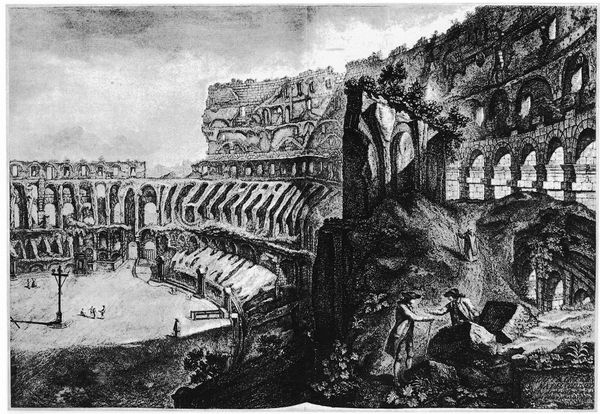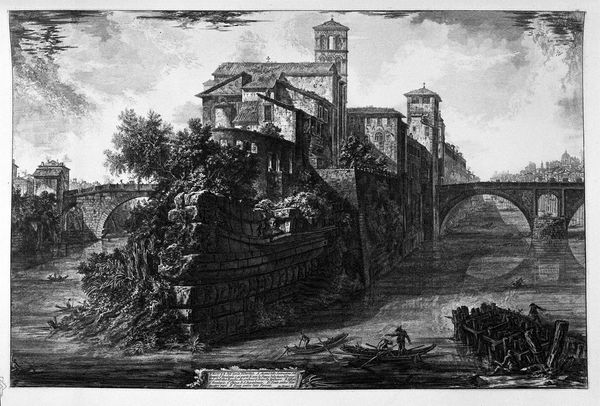
print, etching, engraving, architecture
#
baroque
# print
#
etching
#
landscape
#
perspective
#
form
#
line
#
cityscape
#
history-painting
#
engraving
#
architecture
#
realism
Copyright: Public domain
Curator: This striking print is from Giovanni Battista Piranesi's series "Vedute di Roma," views of Rome. It exemplifies his baroque style, even without a confirmed creation date. Editor: My immediate impression is one of decay, but also intense labor. The bridge itself is imposing, yet seems to be crumbling even as we see people actively using it. Curator: Indeed. Piranesi's work highlights not only the grandeur of Roman architecture, but also prompts considerations of the societal and political structures of the era. How did this infrastructure facilitate movement and control? And who benefitted? Editor: It's important to consider his process here too. As an etching and engraving, consider the layers of labor embedded within it. From sourcing the metal plate, to executing such meticulous details, to the role of the printing press itself to circulate the artwork. This challenges the notion of the artist as solitary genius, really shining light on art as a collective undertaking. Curator: Absolutely. And look at how he manipulates perspective, making these structures seem simultaneously monumental and vulnerable. This served political and commercial purposes. Piranesi marketed these prints to tourists, thus shaping an idea of Rome, as much as just capturing it. Editor: I'm drawn to the sheer quantity of lines—the etching itself seems a feat of intensive labor. It mirrors in the physical construction and also use of the architecture presented within it. You feel the artist really working the materiality of the printing. Curator: It truly prompts us to reflect on the dynamic between the city as artifact, a marker of civilization and cultural exchange and art's role in shaping perception, isn't it? Editor: Yes, that's a very relevant observation, especially considering its creation. Viewing and considering what is presented as it came together expands our ideas about both art-making and material existence.
Comments
No comments
Be the first to comment and join the conversation on the ultimate creative platform.
